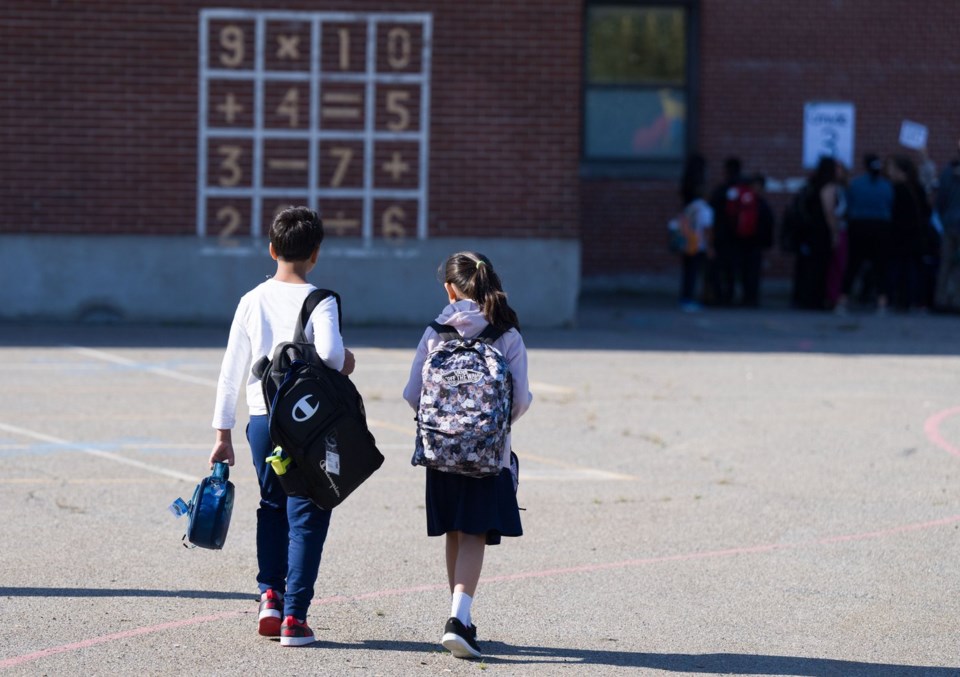TORONTO — It's normal for kids and teens to get butterflies in their stomachs as the first day of school approaches, but those who struggle with chronic anxiety may need extra support, mental health experts say.
Dr. Daniel Chorney, a child and adolescent psychologist in Halifax, recalls a patient who had many of the typical warning signs of an anxiety disorder that came to a head at back-to-school time.
The 11-year-old girl "was anxious about most things in her life — something we call 'behaviourally inhibited' — meaning she was cautious or hesitant to try most new things, enter new situations, or meet new people," said Chorney, who did not reveal the girl's name to protect her privacy.
She cried every day the week before school, had daily stomach aches and no amount of reassurance from her parents was enough.
The morning of her first day, she rejected the outfit laid out for her but froze while trying to pick another, "worried that others would make fun of her choice," Chorney said.
She cried for most of the ride to school and refused to get out of the car once they arrived, relenting only when teachers came out to greet students. Though she continued to go to school, she remained anxious and was still calling and texting her parents in October.
Her case shows common signs of both generalized anxiety and social anxiety, said Chorney, who is on the scientific advisory committee of Anxiety Canada.
Kids with these types of disorders — as well as their parents — often need mental health support, he said.
Alisa Simon, executive vice-president and chief youth officer at Kids Help Phone, said back-to-school worries are normal and that the season is one of the busiest times of the year at the national helpline.
Still, it's important to watch out for "that difference between worries and anxiety, depression ... (or) thoughts of not wanting to be here or suicide or self-harm,” she said.
A key thing parents can do to manage both normal and chronic anxiety is making time to really listen to their kids, said Gillian Gray, a social worker who develops resources for parents and caregivers at School Mental Health Ontario.
"As a parent, things like actively listening and having conversations with your child about their hopes for the upcoming year and also their worries ... can be really important, Gray said.
Simon said those conversations should start with "questions that don't have an assumption in them."
"For example, rather than saying, 'Are you excited to start school?' you could say, 'How are you feeling about school starting?' so that you allow young people to have the wide range of feelings they might have," she said.
It can be helpful to talk through specific situations your child or teen is worried about, Simon said.
If they're afraid a friend won't talk to them, discuss what they could do if that actually happened, she said.
"Allow the young person to come up with some ideas (such as), 'Well, I guess I could talk to some other people. I could go ask them (or) I could write a note (asking), 'Why aren't you talking to me?'" she said.
"Then they start to feel like, 'OK, I have some things I could do in this situation.' And feeling empowered with some tools does help you move beyond just the fear or the place of anxiety.”
In therapy, Chorney often talks anxious kids and teens through "probabilities and likelihoods."
"One of my favourite questions to ask is: 'What else could happen?' Anxiety tends to really focus on ... negative prediction about the future, and it's often extreme."
He encourages them to come up with three scenarios: a "future-bad" that's anxiety-driven, a "future-good" that's optimistic and a "future-OK" that's realistic.
He said that shifts thinking from the pessimistic extreme of fearing no one will talk to them, to the optimistic possibility of making lots of friends, and ultimately to a more realistic scenario that they may meet one or two nice classmates.
It's critical that parents avoid giving blanket reassurances like "everything's going to be fine" to kids with anxiety, Chorney said.
"The unfortunate truth is sometimes it's not all fine." he said. "The messaging should be: 'Even when it's not all fine, you can get through it,'” he said.
The worst thing parents can do, mental health experts agree, is allow a child to stay home from school because they're anxious.
”We know how anxiety works when you avoid something you're afraid of. The power of that thing grows," Chorney said.
"And so avoiding (it) is actually the fuel that drives anxiety over time."
If a child's anxiety is debilitating, Dr. Zoe Kichler of North York General Hospital in Toronto said an important first step is to get the child into the school building and have a support person, such as a guidance counsellor or social worker, meet them.
"The mainstay of treatment for anxiety is kind of tolerating the stress and doing exposures to the anxiety-provoking situation,'" said Kichler, a child and youth psychiatrist.
Her colleague, Dr. Kevin Gabel, said going to school also challenges the negative thoughts an anxious child is having.
"You realize...the really bad thing you were worried about doesn't happen, or even if something not-so-good happens, you sort of learn that you can cope with it and you get support around that," he said.
–––
Kids Help Phone provides free support and resources 24 hours a day, seven days a week. Phone 1-800-668-6868. Children and youth can text 686868 and adults can text 741741.
Anxiety Canada provides resources at www.anxietycanada.com
School Mental Health Ontario provides resources for parents at https://smho-smso.ca/parents-and-caregivers/
–––
This report by The Canadian Press was first published Aug. 31, 2024.
Canadian Press health coverage receives support through a partnership with the Canadian Medical Association. CP is solely responsible for this content.
Nicole Ireland, The Canadian Press


